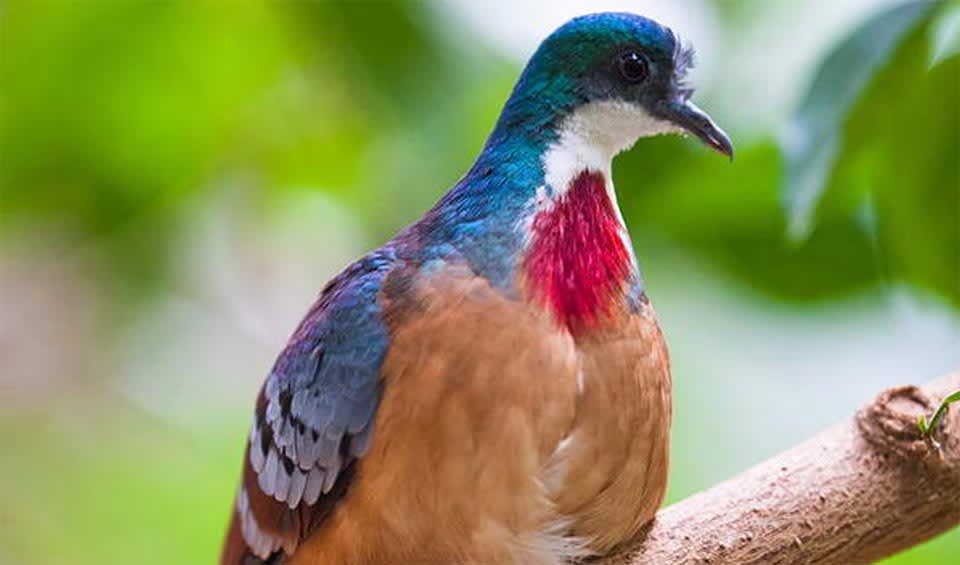A stunning and elusive bird native exclusively to the dense, tropical forests of Mindoro Island in the Philippines. This species is part of the Gallicolumba genus, commonly referred to as bleeding-heart doves, named for their most striking feature: a vivid patch of red on their breast, which poignantly resembles a bleeding wound. This distinctive mark is an extraordinary visual characteristic and plays a role in their mating rituals and territorial displays.
The Mindoro bleeding-heart is a medium-sized bird, typically about the size of a small pigeon. Its overall plumage is a soft, earthy grey, providing excellent camouflage against the forest floor where it spends much of its time. The underparts are slightly paler, and the legs are a strong, clean red, which adds a subtle contrast to its otherwise muted tones. The ‘bleeding’ heart mark is surrounded by a white and then a darker feathered enclosure, making it appear even more striking against the grey of its chest.
This bird’s lifestyle is as fascinating as its appearance. The Mindoro bleeding-heart is predominantly terrestrial; it forages on the ground for seeds, fruits, and small invertebrates. Its build is robust with strong, short wings that suggest it is not a frequent flier, and indeed, it prefers running to flying, dashing quickly through the underbrush to escape threats. Its flight is typically short and explosive, used more as a last resort than a common mode of travel.
Sadly, the Mindoro bleeding-heart is critically endangered. Its survival is threatened by severe habitat destruction due to logging and agricultural expansion. The limited range of this species, confined only to Mindoro Island, makes it particularly vulnerable to extinction. Conservation efforts are urgently needed to protect the remaining forested areas and to implement breeding programs that could help increase their dwindling numbers.
Distribution
 Philippines
Philippines Official estimate
Official estimate
Anything we've missed?
Help us improve this page by suggesting edits. Glory never dies!
Suggest an editGet to know me
Terrestrial / Aquatic
Altricial / Precocial
Polygamous / Monogamous
Dimorphic (size) / Monomorphic
Active: Diurnal / Nocturnal
Social behavior: Solitary / Pack / Herd
Diet: Carnivore / Frugivore/ Omnivore / Piscivorous / Insectivore
Migratory: Yes / No
Domesticated: Yes / No
Dangerous: Yes / No




